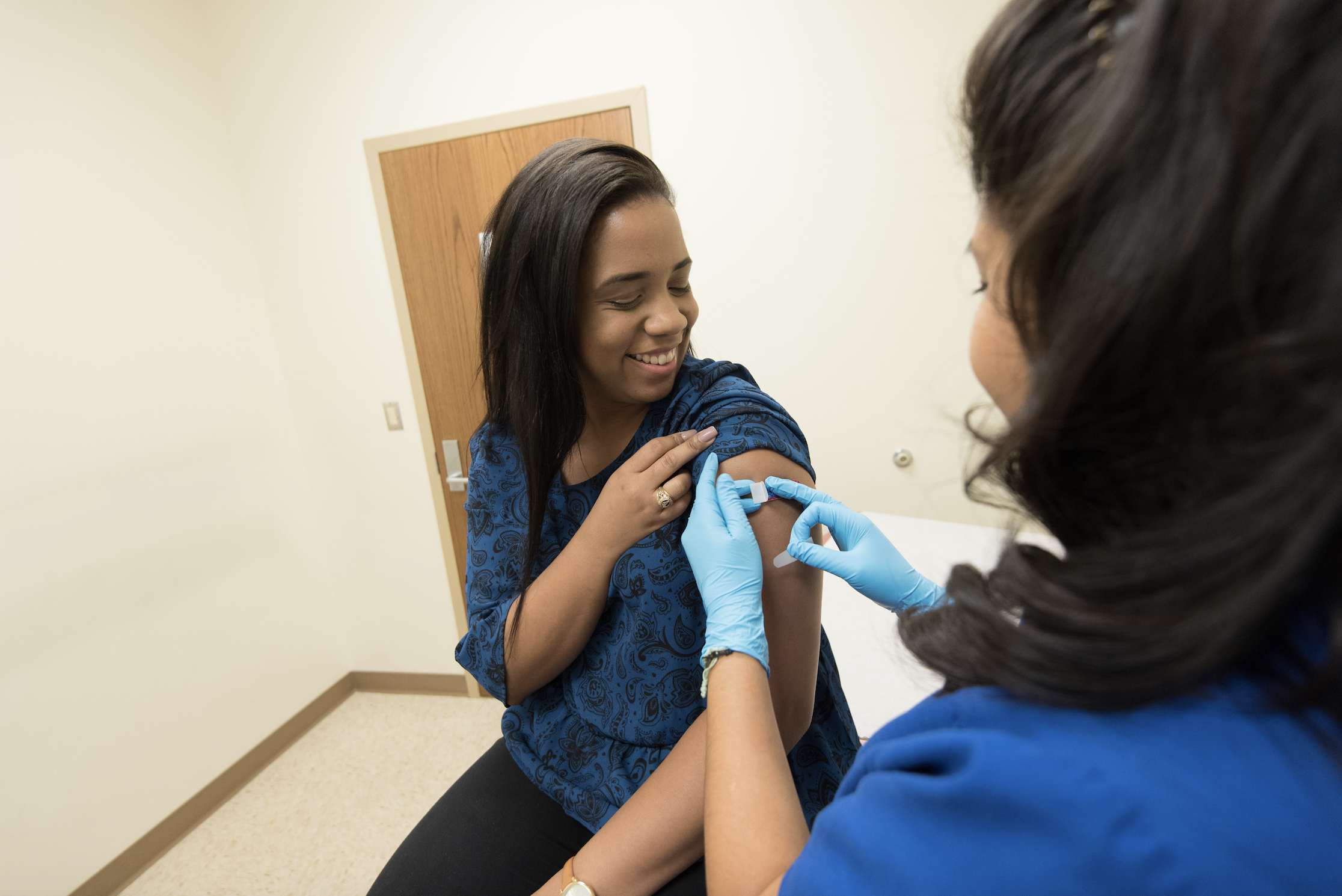Rapidly establishing such systems frequently involves setbacks in timing and communication, says Dr. Nicholas Loyd, director at UAH’s Center for Management and Economic Research and Alabama Technology Network, as well as a clinical assistant professor in UAH’s Industrial & Systems Engineering and Engineering Management Department, but he also says we’re learning how to do it better by experience.
Dr. Loyd says supply chain communication can be complex even in the simplest systems.
“Imagine the game of Telephone, where one person starts with an initial message, and that message gets slightly distorted as it is relayed from person to person,” Dr. Loyd says. “By the time the last person repeats the message, it is entirely different than the original, which leads to a lot of confusion in understanding the facts and intent of the original message.”
Now imagine that phenomenon happening across each vaccine supply chain entity, he says, with the multitude of information and requirements that are being communicated during this race.
“The need to mass produce it in volumes to supply the entire world, along with the fact that multiple efforts to do so are happening in parallel, certainly leads to immense challenges.”
The new mRNA COVID-19 vaccines developed by Pfizer and Moderna that are U.S. Food and Drug Administration (FDA) approved for use were created and tested in a very short 10-month period. But to swiftly achieve production and distribution to vaccination sites meant that a lot of supply chains had to be quickly established for the products.
First of all, the new vaccines are made with a process never used before for mass vaccine production. Next, a large supply of vials, caps for the vials and syringes had to be established and delivered to the right places at the right times for the production process to be completed. Vial shortages have been an impediment. Then, the syringes and other paraphernalia used at injection sites had to be delivered in time for the arrival of the vaccine.
The FDA recently approved use of low dead-volume syringes, which can extract six doses of vaccine out of vials that formerly were rated at five doses, and that requires another logistical system to produce and distribute them to vaccination sites.
The fact that the manufacture and distribution of these products is centralized and constrained to a relatively small group of people complicates matters, Dr. Loyd says. He compares the vaccine rollout with the need for personal protective equipment (PPE) earlier in the pandemic, which was fulfilled more quickly because the processes were more open sourced.
“When there was a shortage of medical PPE, here in North Alabama there was an amazing effort to fill the need for face shields, masks, hospital gowns and even ventilators,” he says. “Companies were converting their plants and processes to make products they’d never made before, academic labs were using prototype equipment to produce items, and even individuals were 3D printing mask components and sewing garments from their homes.”
That was possible because blueprints for components were made available through open-source sharing, Dr. Loyd says. Production equipment and processes were commonly available, affordable and reasonable to learn, and resources were decentralized so they could reach more places more frequently.
“We have the exact opposite with the vaccine. We have a product made from ingredients very few people know, by processes that aren’t widely available and that aren’t easy to reliably replicate, and the resources to make and distribute the product are extremely centralized.”
Additionally, the super-cold conditions under which the Pfizer vaccines are shipped required the creation of new, specialized “freezer farms” at United Parcel Service, Federal Express and other shippers.
Pfizer’s vaccine must be kept colder than Antarctica throughout the supply chain. New ways of packaging had to be developed, produced and delivered to keep vials cold, and recipient institutions had to acquire and establish ultracold storage facilities.
Moderna’s vaccine also requires cold storage but not at the ultra-low temperatures that the Pfizer vaccine does.
The logistics of bringing those specialized distribution systems into play quickly can be daunting and errors and miscommunication can occur, as the nation has discovered.
“This is a critical aspect to understand about supply chains, that they are an orchestration of pieces and events coming together at the right time and place,” Dr. Loyd says.
A lot of things have to happen in concert to execute a successful vaccination, he says.
“Then there is a limited time to be able to administer the vaccine, and hopefully provide it to someone with a priority need. Here is another factor to consider: all of that has to happen twice for one person in order for vaccination to be successful.”
The more remote the delivery location, the harder the logistics can become, but as other types of vaccine become available that don’t require cold storage, some of the logistical drawbacks for rural areas will begin to subside.
“These first two that use the mRNA approach present more uncommon distribution challenges than others in the pipeline being developed with the more traditional approaches,” Dr. Loyd says.
“As those become available, more people will have access,” he says. “Regardless of the type of vaccine, however, distribution on this large, global scale will require unconventional thinking. The key is to get a good vaccine, a person in need and a qualified health professional to administer the vaccine in the same place at the same time.”
Bringing all these pieces together quickly in the largest mass-vaccination program in the nation’s history has created a very large logistical challenge and learning curve, but Dr. Loyd says there is a silver lining. The lessons learned should result in improved efficiency over time and that will mean more vaccinations in more arms going forward.
“The good news is we’ve been studying supply chain dynamics for a long time now and some of the lessons learned from seminal works like the Massachusetts Institute of Technology’s Beer Game supply chain exercise, the Toyota Production System and others have been applied during this pandemic and undoubtedly saved us from even more peril,” Dr. Loyd says.
“Learning and technology are advancing at rates exponentially faster than in the past, and in the same way that researchers have been able to push vaccine development faster than ever before, I expect supply chain dynamics to adapt to these new challenges just as quickly.”
The 100-year challenge that is the COVID-19 pandemic is providing supply chain researchers with plenty of opportunities to learn for the future, he says.
“The good news for my profession is that the COVID-19 pandemic has generated enough supply chain case studies to keep us learning for decades, whether it be classic stock out examples like we experienced with toilet paper shortages during COVID-19’s outset, or now what we are seeing with the new product development side of supply chain management with the vaccines.” Dr. Loyd says.
“It will be important to document and preserve knowledge of both what worked and what didn’t. The more we can learn and leave behind, the farther ahead we will be the next time.”




